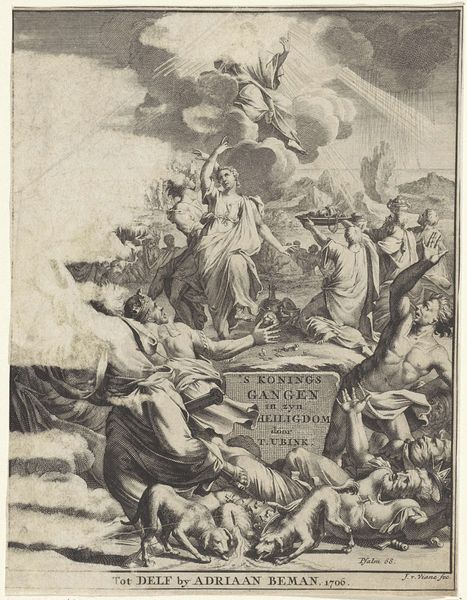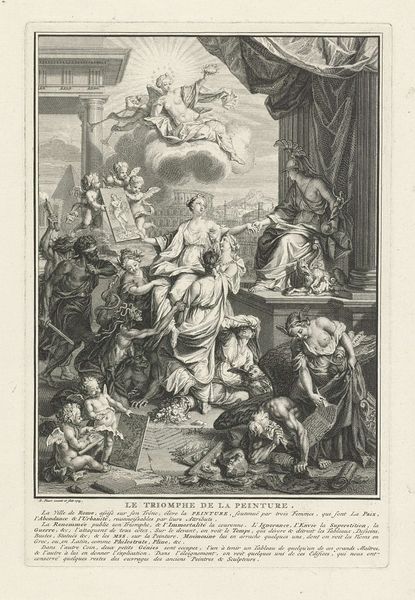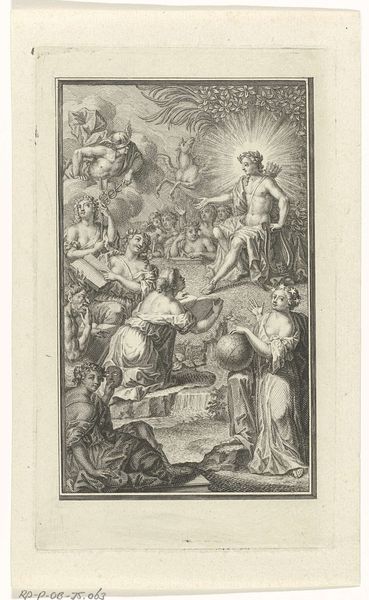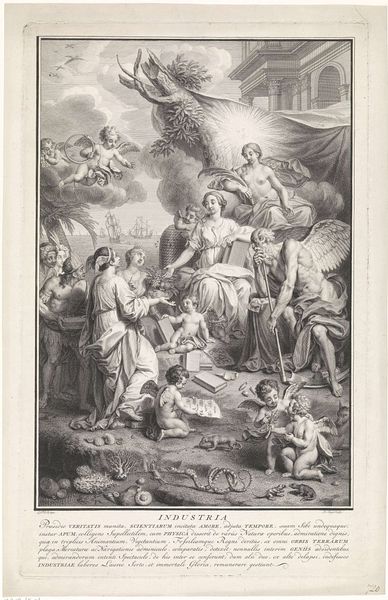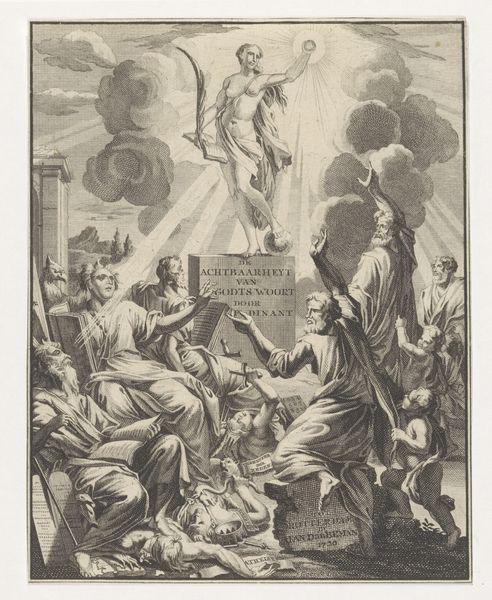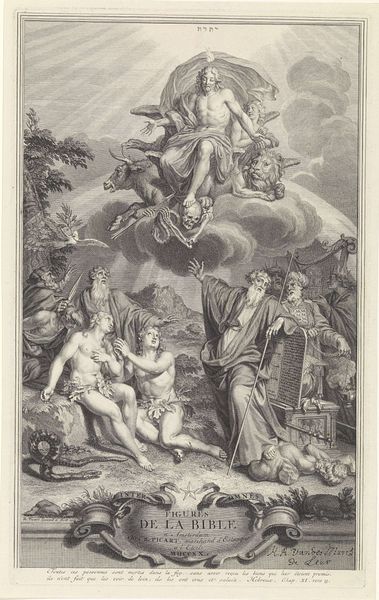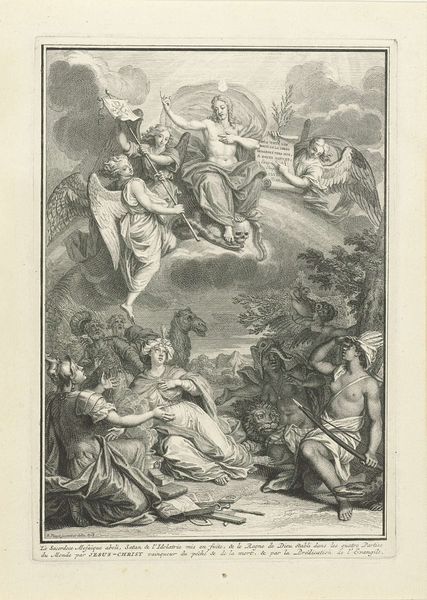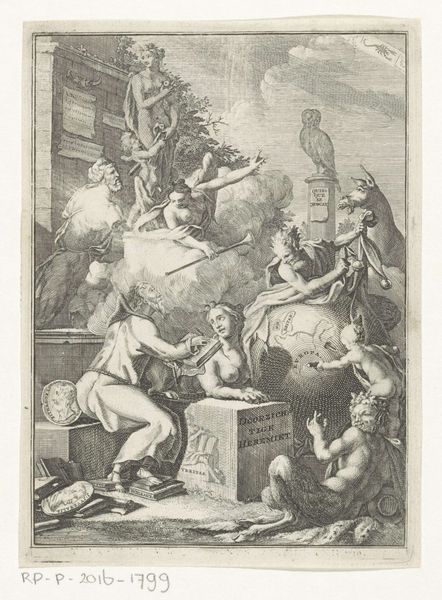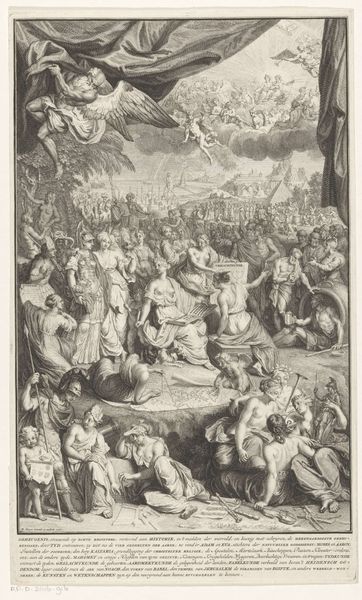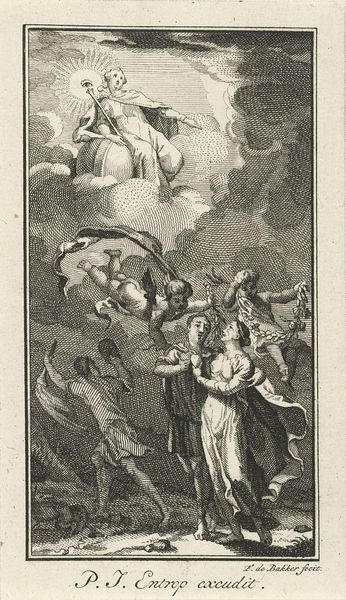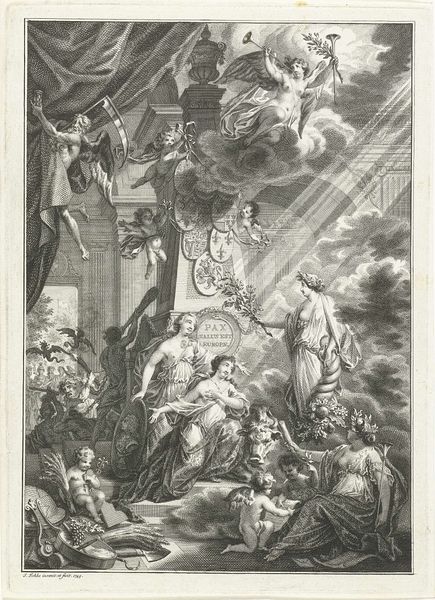
engraving
#
allegory
#
baroque
#
old engraving style
#
figuration
#
form
#
line
#
history-painting
#
engraving
Dimensions: height 339 mm, width 220 mm
Copyright: Rijks Museum: Open Domain
Curator: Immediately, I'm struck by the sheer density of the engraving, a visual cacophony. All those figures tumbling into one another… Editor: Let’s take a closer look at François van Bleyswijck's "Allegorie op Oude en Nieuwe Testament," created in 1729. You can find this elaborate piece here at the Rijksmuseum. It really showcases the artistic and philosophical inclinations of the Baroque era. Curator: Indeed. The allegorical language is so heavily coded. What do you make of this jumble? Editor: It strikes me as a carefully constructed visual argument, presenting the shift from Old to New Testament. The Old is shadowed, heavy with symbolism of earthly empires, whereas the New is bathed in divine light, with Christ reigning above. Curator: Absolutely. The symbols carry considerable weight: the defeated idols representing the vanquished pagan faiths; the instruments of martyrdom underscoring sacrifice; the very text displayed, hinting at covenants being superseded. This is a layered cultural encoding. Editor: And the technical skill required to produce such fine detail within an engraving is also striking. Notice how the artist uses cross-hatching to create subtle gradations of light and shadow, even replicating textural distinctions. Curator: The weight of religious history, translated into symbolic visual language…I find myself wondering how audiences in 1729 navigated this density of symbols, if these allegories were universally known or required decoding. Editor: Precisely! It speaks to how art serves as a kind of archive, storing collective values and transmitting cultural memory. These dense visual fields would have prompted elaborate interpretive work. Curator: Reflecting on our exploration, what persists is the complex intersection between faith, symbolism, and technical expertise, a truly emblematic expression of its time. Editor: Ultimately, in "Allegorie op Oude en Nieuwe Testament," we discover more than just an engraving; we unearth an enduring meditation on transition and transformation, rendered meticulously for reflection.
Comments
No comments
Be the first to comment and join the conversation on the ultimate creative platform.
